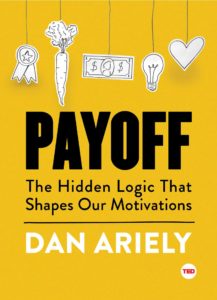By Winnie Ranjan who is a Second Year PGDM Student at IILM Lodhi Road
Higher management education has witnessed a radical transformation in a matter of months due to the COVID 19 pandemic. Technology in the education sector has become an integral part of the new normal. This paradigm shift in the education sector has boosted the overall learning process. As a management student, online learning has made me wonder about the different trends and opportunities evolving in the field of education in the coming years.
As a response to the COVID 19 challenge, colleges and universities have revised the courses and subjects offered to students in order to facilitate learning that aligns with the skills required in the upcoming job market. The digital market space has taken another sharp upward turn and has evolved faster than ever before with new powerful sectors leading the pack. Different fields like data analytics, remote management, digital business, technology advancements among others have created even more demand for jobs. IILM has started offering subjects which foster alignment with the required skill sets in the job market.
In the current business world where everything is heavily dependent on data, analytics has become one of the powerful tools for the success of any organization. Considering this scenario, IILM has started offering different analytics-based courses to its students like Marketing Analytics, HR Analytics, Business Analytics, etc. which are in high demand in today’s job market. We also have a course on Python as technology is rapidly changing and learning programming has become crucial for future managers, so that they can provide innovative solutions for problems in the business world.
The lockdown has highlighted the importance of E-commerce due to the changing behaviour of the consumers. It is very important for management students to learn about E-Commerce for both job opportunities as well as self-employment. Industry experts are delivering guest lectures so that students can gain insights into the practical application and challenges of e-commerce in various sectors.
IILM revamped its courses based on the current scenario and future forecast. It is also offering a course in Logistics Management. Apart from the digitalization in this industry, there has been a lot of changes in the global logistics management and supply chains due to the disruptions brought by the pandemic. Understanding these interactions is very important for managers to manage inventories and plan ahead.
There has always been a concern with remote learning with respect to imbibing social skills. Management students as “future managers” need to work in teams and manage people effectively. To help students incorporate these skill sets, IILM has offered a course on “Managing Virtual Teams” where international faculty have collaborated with IILM faculty members. This has enabled the mutual benefits of global learning for both students and faculty.
It is very important in these high times to interact and engage with students so that they don’t feel isolated and miss out on the personal touch. Business schools are planning sessions where they engage the students through different fun activities, games and other medium. At IILM, we have an interesting career course on “Management Through Movies” where students participate enthusiastically and discuss different movies keeping in mind the management approach.
The past few months have led to the digitization of education which has given rise to many online education platforms like Coursera, Udemy, Byju, etc., which in turn has widened the scope of learning for both students and professionals. In fact, many business schools have made it compulsory for students to take some courses on these platforms so that they can upscale their existing skills. IILM also took a similar kind of initiative and has tied-up with Coursera for providing free certificate courses to its students. Each student has her own strengths, weaknesses, interest area and pace of learning so based on choosing their own courses from a wide variety offered on this platform has been very helpful in providing personalized learning to students.
Looking into the future:
Looking ahead to a time when colleges and universities would re-open, there are higher chances of integration of analytics and technology into the course curriculum. As management students, it is important that we think through and analyze what is happening around us and how we can create opportunities for ourselves and harness these changes to the best for our learnings for a better future.
To learn more about how the new courses at IILM, please visit us at www.iilm.edu






